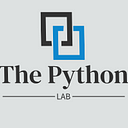Hidden Markov Models for Regime Detection in Diverse Financial Data
In the world of finance, understanding market regimes is crucial for making informed investment decisions. Market regimes refer to different states or conditions that the market can be in, such as bull markets, bear markets, or sideways markets. Hidden Markov Models (HMMs) are powerful tools that can be used to identify these market regimes based on historical data. In this tutorial, we will explore how to apply Hidden Markov Models to detect market regimes in diverse financial data, allowing us to make strategic trading decisions.
Understanding Hidden Markov Models
Hidden Markov Models are a type of probabilistic model that is used to model sequential data where the underlying system is assumed to be a Markov process with unobservable states. In the context of market regimes, the observed data are the historical prices of financial assets, while the hidden states represent the different market regimes.
The key components of an HMM are:
- States: Hidden states that the model transitions between.
- Observations: Observable data that depends on the hidden states.
- Transition Probabilities: Probabilities of transitioning between hidden states.
- Emission…
